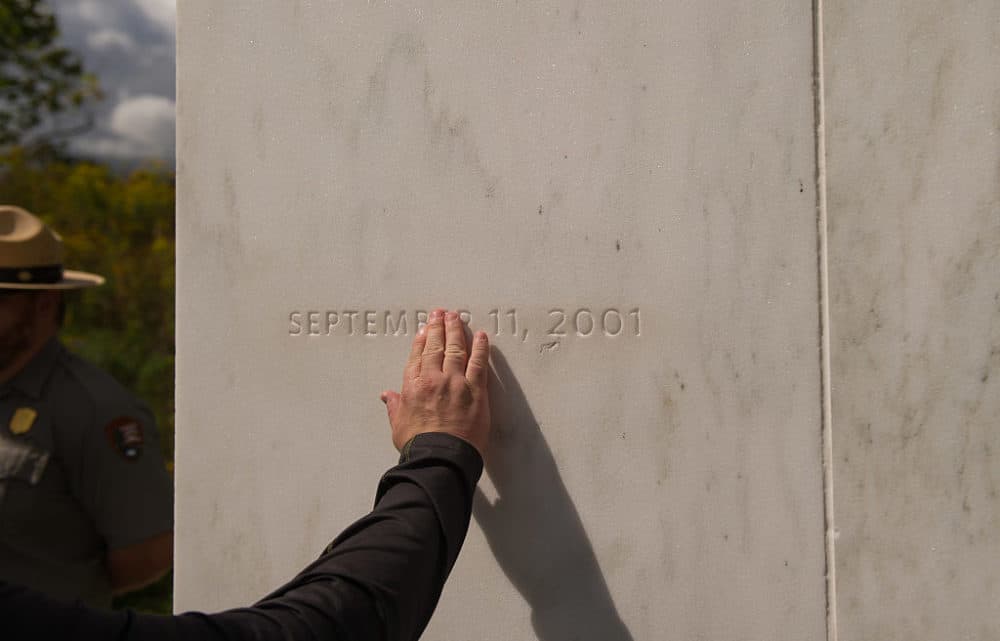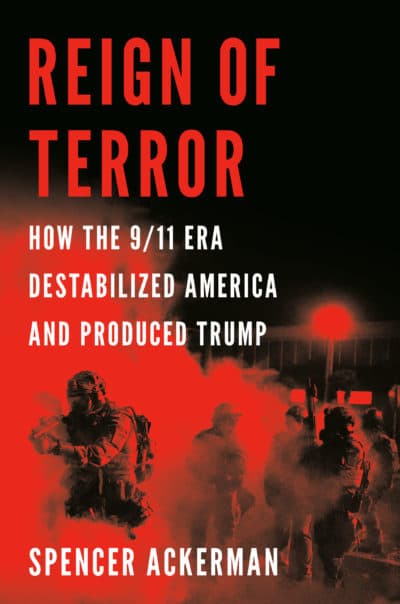Advertisement
Post-9/11 'Forever War' Shaped Policies That Led To Trump's Rise, Author Spencer Ackerman Says

Here & Now's Scott Tong speaks with investigative journalist Spencer Ackerman about his new book, "Reign of Terror: How the 9/11 Era Destabilized America and Produced Trump."
Book Excerpt: 'Reign of Terror'
By Spencer Ackerman
Making The War On Terror Great Again
2017 - 2020
Adham Hassoun prepared to finish his fifteen-year sentence under the PATRIOT Act in October 2017. It was his first chance at freedom since June 2002. But there was a complication.
Hassoun, a Palestinian who grew up in Lebanon, was not a U.S. citizen. He knew that he would be deported. Imprisoned at Marion, Illinois, he expected that he’d be sent back to immigration, likely in nearby Chicago, for a few weeks while the Lebanese completed the bureaucratic process of repatriating him. Instead he learned that no country would take him.

On October 10, Hassoun said goodbye to his fellow inmates and left Marion. He was greeted, he remembers, by “a platoon of armed men, twenty or something,” standing by a fleet of SUVs. For a moment he thought he’d be shot. “No, no, they’re escorts,” he remembered being told; “you’re going to immigration.” When they drove him to the airport, Hassoun figured he was in for a short flight to Chicago. The plane instead landed in western New York, where he was placed in the custody of Immigration and Customs Enforcement. Hassoun became a Forever War trailblazer yet again: its first post‑conviction detainee.
He had spent most of his pre- and post-conviction detention in segregated units, even spending a month in solitary. There was Krone in Miami, the Palm Beach County Jail, Terre Haute, even the infamous Supermax in
Florence, Colorado. His favorite was, paradoxically, the “real prison” he
experienced his second time at Marion, when he was “stepped down” into the general population. He made friends inside Marion, and liked cooking for the whole unit. Andy Stepanian was imprisoned with Hassoun during Hassoun’s first time there. He credited Hassoun with helping “pull me out of my institutional behavior” to reclaim himself from who prison was making him. “Adham changed my life,” Stepanian recalled. “There were individuals there who were true threats. He was not. He talks to the guards all the time. That’s because he’s not a criminal.”
Advertisement
When Hassoun walked into the ICE prison at Batavia, near Buffalo, he saw his picture displayed, “our convicted terrorist.” He noticed a man whose uniform bore the fearsome letters shu—segregated housing unit— and panicked. Desperate not to relive another stint in solitary, he pleaded that he didn’t need the “protection” they were offering. They agreed to give him a cell without a bunkie, but Hassoun was struck by the conditions in Batavia’s general population. “We’re locked in eighteen hours a day,” he recalled. “It’s extremely creepy because it affects your psychological situation. My ordeal started all over again.”
Hassoun had begun his imprisonment in an immigration detention center at the dawn of the Bush administration. When he returned to one, at the dawn of the Trump administration, the cages had swollen. Filled with nonwhites treated like criminals for committing no more than a civil misdemeanor, they were the signature of the Trump immigration era. Trump may have promoted the Wall, but it was never truly built, nor did he deport the multitudes Obama had. The real nativist innovation of Trump was to lock up the migrants who were already in America. He empowered ICE as never before. In Fairfax County, Virginia, ICE agents waited to ar- rest people leaving a church hypothermia shelter. By March 2019 ICE’s prisons, many of which were forprofit, held a record fifty thousand people.
While those prisons, and the adjuncts run by Customs and Border Protection, were instantly understood to herald the Trump era of immigration, it was relatively rare to hear them discussed as a mark of the Trump era of the War on Terror. Trump never fulfilled his promise to load up Guantanamo, nor was he known to have reopened the CIA black sites. The up-close cruelties practiced within them, the ones that Trump championed, the ones that a generation of right-wing politicians and media figures excused or applauded, were practiced closer to home: on immigrants.
Excerpted from "Reign of Terror: How the 9/11 Era Destabilized America and Produced Trump" by Spencer Ackerman. Copyright © 2021 by Spencer Ackerman. Republished with permission of Penguin Random House.
This segment aired on September 10, 2021.